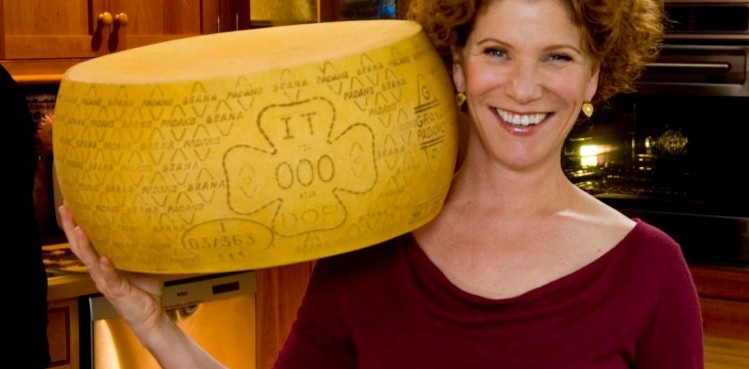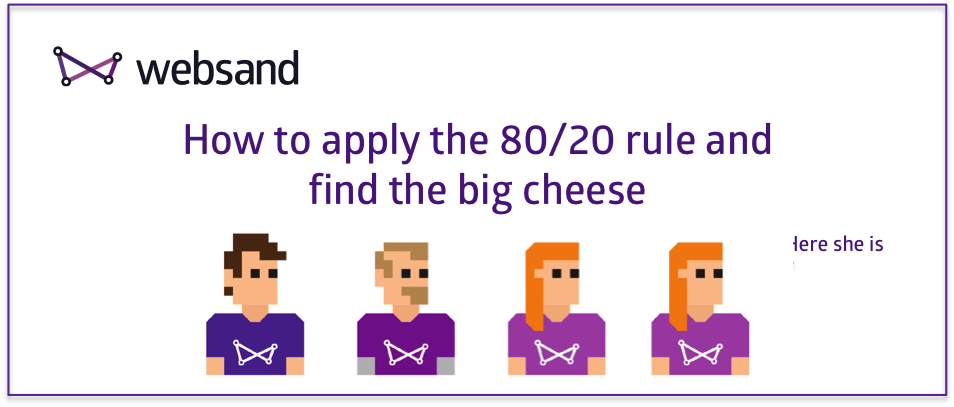What is the 80/20 rule
The 80/20 rule has been called a power equation, probably because it works. If you have a reasonable number of customers (over 1000), and apply the 80/20 rule to your business you’ll find that it works. 80% of the revenue you generate will be from 20% of your customers.
It’s those customers – the 20% – are the real power to your business. These people are your VIP’s, the big kahunas, the big cheese.
Do you know who they are?

Where did the 80/20 rule come from?
First, allow me to explain the history and share a bit of science. The 80/20 rule is also known as the Pareto Principle, which was first published in 1896 by Italian economist Vilfredo Pareto. In his paper “Cours d’économie politique.” Pareto demonstrated that approximately 80% of the land in Italy was owned by 20% of the population.
Apparently, Pareto developed the principle by observing that 20% of the peapods in his garden contained 80% of the peas, so the 80/20 rule also works for vegetables.
Finding the big cheese
Not every customer is created equal, your business is made up of lots of different customers. They share a common trait in that they have bought something from you, and that’s the information you need to find the big cheese (the top 20%).
The big cheese’s often go unnoticed, this is especially true in e-commerce.
If someone makes a purchase of £1000+ and your average basket value is £50. You’ll notice that. But if someone is spending regularly then, they could have a customer lifetime value worth £3,000+ to your business without you noticing.
If that is the case, then you are missing a huge opportunity.
Finding this 20% (the big cheese) can help you understand which where the real value exists within your business and unlock huge growth.

image: https://culturecheesemag.com/blog/talking-cheese-big-cheese
We aren’t all peas in a pod
Just as Pareto found that the 80% of the peas in his garden came from 20% of the peapods, the 80% of your revenue will come from 20% of your customers.
However, for Pareto to figure out what was in his garden he had to dig it up. He could only understand what was in each peapod and it’s importance by opening it and then evaluating it in comparison to the other peapods in the garden.
If you considered your database a garden then segmentation is the tool you use to manage your garden. To separate the different crops you are growing.
That’s enough about gardens and peas…
The point is to understand the big cheese in your business you need to understand the value of each customer.
In that regard, customer lifetime value is a golden metric. CLV instantly tells you much a customer is worth, and how much they contribute to your revenue.
Understanding your data
That database you have might be spoken about as a single number, but of course it’s not. Your database count of the many people that your business has a relationship with (past and present).
Your database is not a single number, it’s a number that represents different audiences within your business, for example.
- People that have bought.
- Your new subscribers that have just signed up.
- The good people that have responded to your latest marketing campaign.
- Customers that are worth over £100 and have bought in the last 23 days and like the colour green.
Know you know that these groups exist, and they change every day. So identifying these groups can be difficult and hard work – so lots of people simply don’t do it.
That’s ok. But they won’t get the competitive advantage you can create by focusing on your customers.
Those that invest in segmentation and understanding their business based on customer lifetime value get a huge return on the investment they make.
- They have a deeper understanding of the customers that make the most money – and can focus resources to retain the important customers.
- Analytics to develop knowledge of which types of inbound marketing attract the most valuable customers
- And they know whose feedback is truly valuable to the business (rather than simply feeding a search engine).
Who moved my cheese?
But remember, this isn’t a one time thing, and as Ferris Bueller says ‘life moves pretty fast‘.
Once in place, customer segmentation needs to be dynamic and linked to your business activity, if it’s not then you’ve wasted your time as it’s a reporting snapshot.
Someone who is a member of the big cheese one day, may not qualify the next day.
If you’ve got a member of the big cheese family that hasn’t been active for a while you need to react to it, and likewise when another customer enters the ‘big cheese’ family you want to make sure they are welcomed with open arms.
That’s where marketing automation comes in. To concierge your VIP’s based on their behaviour.
We’ll help you find your big cheese
Book a slot on the calendar below and take your first step towards customer value-driven marketing.
